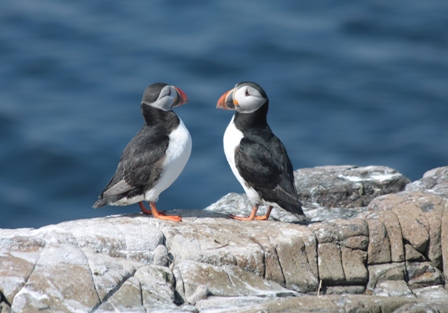A new study, carried out by a group of MD Anderson researchers and published this month in “Molecular Cancer Therapeutics” (see abstract: http://tinyurl.com/c2hlfx) confirms what we already knew about curcumin’s synergy with bortezomib.*
The researchers performed experiments on myeloma cells and also on nude mice. Now, since I frequently read about “nude mice,” some time ago I gathered the courage to do a bit of research… almost wish I hadn’t!…at any rate, these mice are simply hairless (hence their nickname “nude”), not in need of a new set of clothes. Most importantly, though, due to a genetic mutation, they are born without a thymus and thus have an inhibited immune system, which means that they are not able to reject tissue or tumour grafts (they also have little or no defence against viruses and all sorts of nasty stuff, poor dears). Therein lies their usefulness.
Now, let me state that, after reading about nude mice, not to speak of other lab animals!, I finally stopped regretting that I didn’t choose science as my major in college and grad school. Ah yes, I’d have been the crazy student taking all the nude mice home, wrapping them in warm shawls and keeping them as pets…hmmm, something tells me that my brilliant scientific career wouldn’t have lasted very long…
Okay, now that that is all cleared up, and I have admitted publicly to how silly I am, let’s proceed. An important result of this new study is that curcumin inhibited the proliferation of human multiple myeloma cells regardless of their sensitivity to dexamethasone, doxorubicin, or melphalan. The wonderful orange powder also helped bortezomib and thalidomide kill myeloma cells by reducing NF-kappaB’s incessant hyperactivity (=a bad BAD thing!), which also affected the gene products under its control (cyclin D1, etc.).
Going on to the full study, now (grazieeee, Sherlock!). After a paragraph dealing with the usual dire myeloma statistics, blablabla, we find out that the researchers used C3 Complex, the curcumin that I (and many others) take. Good to know.
And then we get to the actual experiment, which I will try to summarize. The nude mice were divided into four groups: 1. the control group, which was treated just with corn oil and saline; 2. the curcumin alone group (1 gram of curcumin per kilogram…holy cats, that seems like a LOT! Ah no, wait, see my footnote**); 3. the bortezomib alone group, and 4. the curcumin and bortezomib combo group.
25 days after the treatment start date, the mice were killed, and their tumours examined. Skipping the long and detailed explanation of how this process was carried out, let’s get to the results. Compared with the other three groups, the biggest tumours were in the control group, as to be expected. There was instead a significant decrease in tumour volume in both the curcumin and bortezomib groups, i.e., 2 and 3. But in group 4, the combo group, the tumours were even smaller: When examined for tumor volume on different days, we found that curcumin + bortezomib combination was much more effective in reducing the tumor volume compared with either agent alone.
As for thalidomide, the researchers used myeloma cells treated with curcumin in combination either with bortezomib or thalidomide and found that Curcumin potentiated the apoptotic effect of bortezomib from 25% to 85% and thalidomide from 10% to 75%. Not bad at all…
Another interesting titbit, for those who remember my PARP cleavage post: When we examined the poly(ADP-ribose) polymerase cleavage, which indicates caspase-3 activation, a well-known characteristic of apoptosis, we found that curcumin potentiated the effect of bortezomib and thalidomide. In this particular case, curcumin worked better with thalidomide.
Now for the Discussion part: First, cells resistant to chemotherapeutic agents have been shown to express increased activation of NF-kB and suppression of this NF-kB can sensitize the cells to the drug. Second, multiple myeloma cells and mantel cell lymphoma are known to express constitutive active NF-kB that is resistant to bortezomib. Fairly clear, no?
Then we get to an interesting titbit concerning CRP: C-reactive protein, whose expression is regulated by NF-kB, has been shown to enhance the proliferation of myeloma cells and protect myeloma cells from chemotherapy-induced apoptosis both in vitro and in vivo. Among other things, CRP also increases the production of IL-6 with which it works synergistically to protect myeloma cells from chemotherapy-induced apoptosis. Bad stuff…!
Other proteins that help myeloma cells become resistant to the attacks of chemo drugs are cyclin D1, the members of the infamous Bcl family and survivin. I have posted about all of these buggers. At any rate, the study confirms that curcumin down-regulates all of them…as we already knew from previous posts.
Like curcumin, bortezomib inhibits the activation of NF-kappaB, but through different mechanisms. As follows: Bortezomib inhibits the proteasome, resulting in the accumulation of IkBa, whereas curcumin prevents IkB phosphorylation, thus blocking its subsequent ubiquitination and degradation through suppression of upstream kinase IKK. Thus, these different mechanisms of NF-kB suppression provide the rationale for combining these agents to effectively inhibit NF-kB activation. Now, even if we don’t understand the meaning of all this, what is clear is that curcumin and bortezomib attack myeloma cells and reduce NF-kB activity in different ways. And that is exactly why, when combined, they work better than when they are used alone.
Another useful characteristic of curcumin: it can help alleviate fatigue and peripheral neuropathy, which are common side effects of the conventional chemo drugs used to treat myeloma. Indeed, the study states that these effects can be REVERSED by curcumin. No comment needed here, methinks…
The study ends with a very strong statement: In conclusion, the chemoresistance remains a major challenge in the treatment of patients with multiple myeloma as well as other cancers. Multiple myeloma patients who have relapsed after conventional dose chemotherapy or stem cell transplantation are typically treated with high-dose corticosteroids, thalidomide, or bortezomib. However, a large number of these patients do not respond to treatment with these agents. Moreover, prolonged exposure leads to the development of resistance and toxicity, and progression-free and overall survival times for multiple myeloma patients are short. The ability of curcumin to suppress NF-kB activation, down-regulate the expression of cyclin D1 and Bcl-xL, inhibit cell proliferation, potentiate the effects of bortezomib and thalidomide, and overcome chemoresistance provides a sound basis for conducting clinical trials with curcumin, alone or in combination with other agents, to enhance treatment efficacy, reduce toxicity, and overcome chemoresistance of relapsed or refractory multiple myeloma.
*Probably based on the fact that I mention chemo treatments from time to time, especially bortezomib (Velcade), more than a few readers have asked me if I have ever had any conventional treatments. The answer is no. For more on that, please see “My Discovery of Curcumin” page, which, er, needs some updating, for instance I have been taking curcumin for more than three years now, not just two…but anyway, the basic info is there.
**When I first saw that 1 g/kg (or 1000 mg/kg) of curcumin was the daily dose administered to the nude mice in group 2 and 4, I thought that that would translate into a massive amount of curcumin for humans. But then I vaguely recalled that there were differences between mice and humans, other than the, uhm, rather obvious ones. And I remembered that there was a way to convert doses from mice to humans. A bit of research led me to a 2008 study (http://tinyurl.com/cv6opy) dealing with this very topic and providing, yay!, the converting formula. So, unless my math is even worse than I thought (!), based on this formula and a 60 kg human being, 1000 mg/kg x 3 = 3000; 3000 : 37 = 81 x 60 = 4860 mg/daily dose. That means: less than 5 grams of curcumin a day in human terms. So for the past three years plus I have been taking a larger dose of curcumin than was used in this study. Interesting. And finally, an appeal to all my blog-reading math whizzes: would you mind checking my calculations? Thanks! It just seems way too simple, that’s all…

